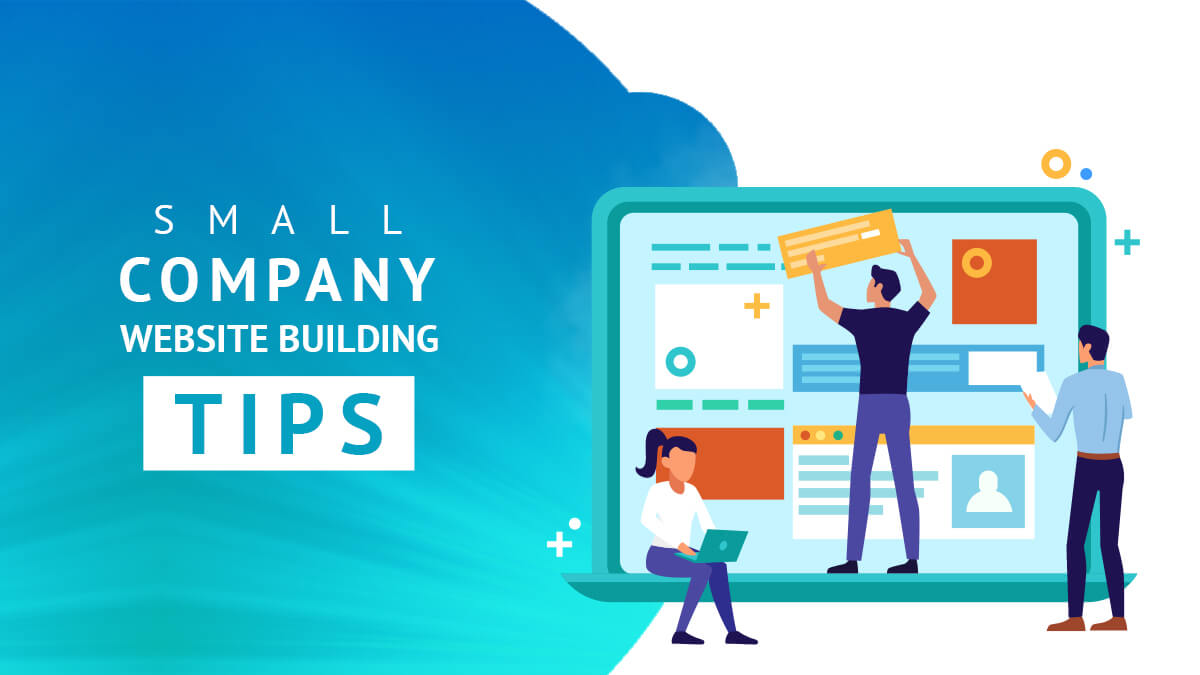Every business, big or small, these days needs a professional website. Getting started, however, can be very daunting for those who have never previously run a website. One of the most critical elements of a company may be a website that helps create trust among customers or drive away potential customers.

Having a small business website can be one of the most significant obstacles faced by small business owners. As the choices are limitless, the challenge becomes much more challenging. And the costs will swing from one end of the spectrum to another without you being able to make some sense out of it. A professional website designer must design a website that can drive more significant and essential traffic to your organization, generate more leads, and minimize the issues users across the spectrum encounter when visiting the website for different reasons and needs.
You are focusing on creating a website for small businesses since a company without a website is inconceivable in 2019. As you move forward, step by step, you must keep your broader objectives and goals in mind in building a more significant organization.
The ten tips listed below will help you get noticed and build the desired effect on your small business website.
1. Free Clutter:
A website design for small businesses should be comfortable and captivating. The audience can be distracted by too much data or an intricate design. The message of professionalism is also sent across by an uncluttered style. Enable your website to breathe and to provide a fun browsing experience for your users.
2. Google Quickly Can Locate Your Site:
An uncluttered website, straightforward content, correct URLs, sitemap, and appropriate keywords will allow search engines like Google to index your website for small businesses fast. The small business website design should require at least simple SEO. To create and maintain your website, it is essential to find an excellent SEO-friendly platform, and you can do that easily with a little support from the Website Advisor.
3. Friendly Mobile:
It would be almost suicidal not to have your small business website react after Google announces the mobile-first index. This merely implies that when viewed on mobile devices, the site will change and rearrange. But it won’t make the website mobile-friendly in itself. You will need to ensure that all devices provide a user-friendly experience on your website.
4. Leads Inbound:
Focusing on the inbound leads and catching as many as possible is one of the most critical tasks of any small company website. People typically want to do an initial study and comparison before buying a product and may not be ready to buy immediately. In collecting their e-mail addresses, this time should be used so that you can keep them updated and measure when they are ready to buy. However, as this might offend a potential client, you should avoid being too persistent.
5. Easily Visible Contact Details:
This may seem like the most natural thing to do, but businesses creating small business websites often neglect this aspect. You should prominently show your phone number and e-mail address on the website and, if appropriate, at the top and bottom of each page. Build a ‘CONTACT’ page at the end that contains not only the contact numbers but the email address, the company’s physical address, and a map, along with the company’s directions and hours of operation.
6. Branding Needs to Be Professional:
On your small business website, avoid any frivolity and concentrate on giving it a professional look compatible with your brand. Use colors that are prominent in the logo of your company. To give your website a professional look, employ a website design company like Globalgraphics, if possible. Please choose one or two fonts and ensure that they are used on the website regularly. The graphics and photographs you use should be synchronized and complement the website as well.
7. Style Should be Transparent and Unique:
Your aim should be to create a website representing your brand, whether you are designing your website on your own or hiring a small business website design company. The first experience is the most meaningful and will either draw viewers or repel them. It is impossible to influence the viewer’s mind if you use some run-of-the-mill design, and your website resembles thousands of those on the net. What will seal the deal for you is the homepage of your website to ensure that this becomes the focus for the whole site and is impressive enough to draw the audience’s attention.
To a tourist, nothing can be more discouraging than a visibly weak website design. Visitors look forward to a smooth navigation phase that will carry them smoothly from Point A to Point B without visual or other challenges being dealt with. Clutter can also make the website a massive downer and scare traffic away from your competitors. The way to go is an easy, user-friendly, and clean design of websites without unnecessary frills and embellishments.
8. Goods and Services Should be Well Showcased:
Several web designs for small companies will not effectively highlight their products or view too many products and services on one page and clutter it. Know that you have the option of winning or losing a potential customer for a few seconds. So make sure that there is a professional first impression. If you are an online product selling company, then the pictures, videos, and details of the product should be crisp and appropriate. If you have a fantastic website design, but your goods have not been well advertised, your customers would think twice before purchasing from you.
9. Load Time for Fast Site:
If a page takes too much time to load, viewers get irritated. Ensure that your small company’s website design has the correct server infrastructure and capacity to sustain it. A graphically, intense design could eat into your loading time and turn off potential clients. By picking up good hosts, site load time can also be increased.
10. Contents:
The importance of content on your small business website is last but not least. In getting indexed by search engines, this plays a significant role. The more your content is qualitative and quantitative, the easier it is for search engines to find your website and index it. When it comes to attracting or putting off viewers, inappropriate or irrelevant material is often a game-changer. You need to pay special attention to the news as this will determine the difference between a visitor leaving your website or continuing to search the rest.
Research shows that now there are more smartphone users than desktop users, and that’s why getting a company website loads quickly and without any annoying bugs is imperative. Google also expects companies to take care of this vital trait and uses page speed as a critical rating element. According to experts, a small business website must be fully loaded in no less than three seconds to pass the performance test. An easy way of calculating page loading time is the Google Page Speed Tool.
The absence of a dedicated and updated website for small businesses will affect your company. You will fall behind your rivals without a website and lose the opportunity to communicate and engage with potential customers. Customers would like to hear and see more about your business before buying a product or service, and the ideal forum to showcase this is a professional website. When creating a website for your small company, the tips listed above will assist you.
Apart from these ten tips, you may consider a few more to add more power and efficiency to your website’s results.
Additional Tips:
Simple Contact Set Up
With very few exceptions, contact details should be provided on any business website, no matter the type or size. This can be a phone number, email website, address, social accounts, or all of the above. The more avenues you give people to contact you, the more likely they feel that reaching out is comfortable.
Often Provide a Form to Contact
A contact form should always be included when determining the types of contact details to include, says Bracket. Often people want to get in contact, but for some reason, they don’t have access to their primary email program or can’t click on your email connection. A communication form makes it possible for individuals to send a message regardless of where they are or what sort of computer they use.
Maintain Elements of Design Simple
Don’t go too wild with various design elements, whether you are collaborating with a designer or just choosing a template. Stick with a few colors or textures, and don’t add too many fonts or sizes of different kinds.
Make Easy-to-Read Text
Since the text on your website is probably what provides your visitors with most of the relevant information, it is crucial that they can read it. Basic typefaces are best for readability, like those that are likely to be recommended by your designer or theme. But don’t turn all your fonts into fancy lettering just because it looks useful to you.
Add Useful Pictures
To add attention to the first business website, visuals such as photos can also go a long way. Team pictures, samples of your work, and even relevant stock images provide some ideas for relevant images. Stop photography with cheap stock. However, an excessive amount of stock photography will not add much to your first website for the company. But if you’re not prepared to spend a little in sound pictures, it may be better to miss it. Including Consumer Feedback Another nice feature of a lot of business pages can be customer testimonials.
If your company is brand new, rather than only publishing bland, generic recommendations, focus on getting some quality testimonials first. But even a few clients’ text blocks will help create your reputation. Insist on a Website for Smartphone But no matter what kind of content you want to provide on your website, make sure the site is sensitive or mobile-friendly on its own. You can scare away clients, damage your SEO, and look unprofessional by making a website that is not mobile optimized.
SEO Analysis
SEO is a philosophy that you would have to hold in mind for your website’s entirety to be run. Initially, the designer should be able to assist with the basics. But you’ll also want to educate yourself over time about some of the concepts so that people can find you online easily. Learn where you go
The Phase is Far From Finished Until Your First Business Website is up
You made a great first move. But the website of a business is never really complete. Add or modify components as the organization expands and changes. Adjust to stuff like smartphone templates and SEO. And always try to keep your clients’ needs and desires in mind when it comes to your first website for the company.
Keep People Returning?
Have data that changes daily, such as a blog or newsletter that clients rely on. A great way to acquire customers is content marketing through a blog because it demonstrates your experience when assisting them. Have informative articles on your blog that can help educate your audience and share knowledge of interest without directly offering them services. A day spa, for example, could feature posts on why a massage is good for stress reduction, new hair coloring techniques, or videos demonstrating how to apply makeup for a special occasion. Your Website Indexing:
Search engines like Google, Bing, and others are searching for unique website ranking elements. This includes content structure and consistency, keywords and their use, URLs, sitemaps, and others. To attract these search engines’ attention and get your deserved rating, it is necessary to have some SEO features on the website. To know what you can do to optimize your website, it might be a good idea to look at the Google Webmaster Guidelines.
